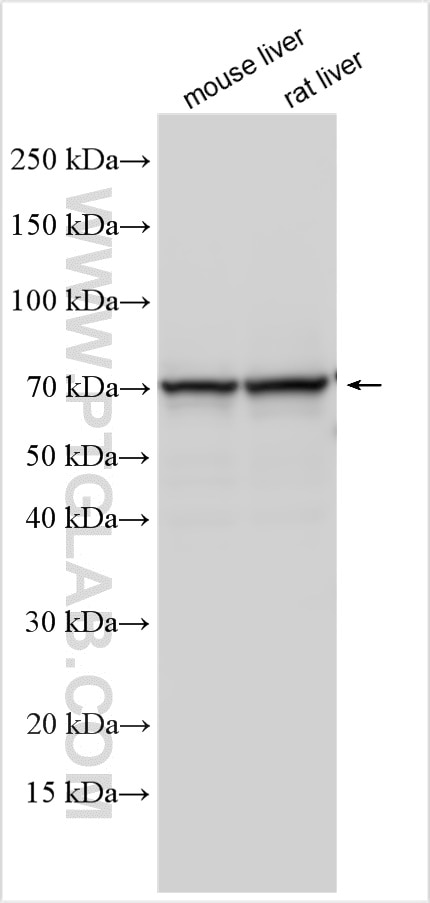Tested Applications
| Positive WB detected in | NCI-H1299 cells, mouse liver tissue, rat liver tissue, mouse kidney tissue |
Recommended dilution
| Application | Dilution |
|---|---|
| Western Blot (WB) | WB : 1:1000-1:8000 |
| It is recommended that this reagent should be titrated in each testing system to obtain optimal results. | |
| Sample-dependent, Check data in validation data gallery. | |
Product Information
23765-1-AP targets UGT1A6 in WB, ELISA applications and shows reactivity with human, mouse, rat samples.
| Tested Reactivity | human, mouse, rat |
| Host / Isotype | Rabbit / IgG |
| Class | Polyclonal |
| Type | Antibody |
| Immunogen | UGT1A6 fusion protein Ag20635 Predict reactive species |
| Full Name | UDP glucuronosyltransferase 1 family, polypeptide A6 |
| Calculated Molecular Weight | 532 aa, 61 kDa |
| Observed Molecular Weight | 70 kDa |
| GenBank Accession Number | BC019861 |
| Gene Symbol | UGT1A6 |
| Gene ID (NCBI) | 54578 |
| Conjugate | Unconjugated |
| Form | Liquid |
| Purification Method | Antigen affinity purification |
| UNIPROT ID | P19224 |
| Storage Buffer | PBS with 0.02% sodium azide and 50% glycerol , pH 7.3 |
| Storage Conditions | Store at -20°C. Stable for one year after shipment. Aliquoting is unnecessary for -20oC storage. 20ul sizes contain 0.1% BSA. |
Background Information
UDP-glucuronosyltransferase 1-6 (UGT1A6, also known as GNT1 and UGT1) plays a crucial role in the glucuronidation of numerous drugs, toxins, and endogenous substrates. This process is essential for detoxifying and excreting lipophilic compounds, primarily in the liver (PMID: 15761114).
Protocols
| Product Specific Protocols | |
|---|---|
| WB protocol for UGT1A6 antibody 23765-1-AP | Download protocol |
| Standard Protocols | |
|---|---|
| Click here to view our Standard Protocols |





